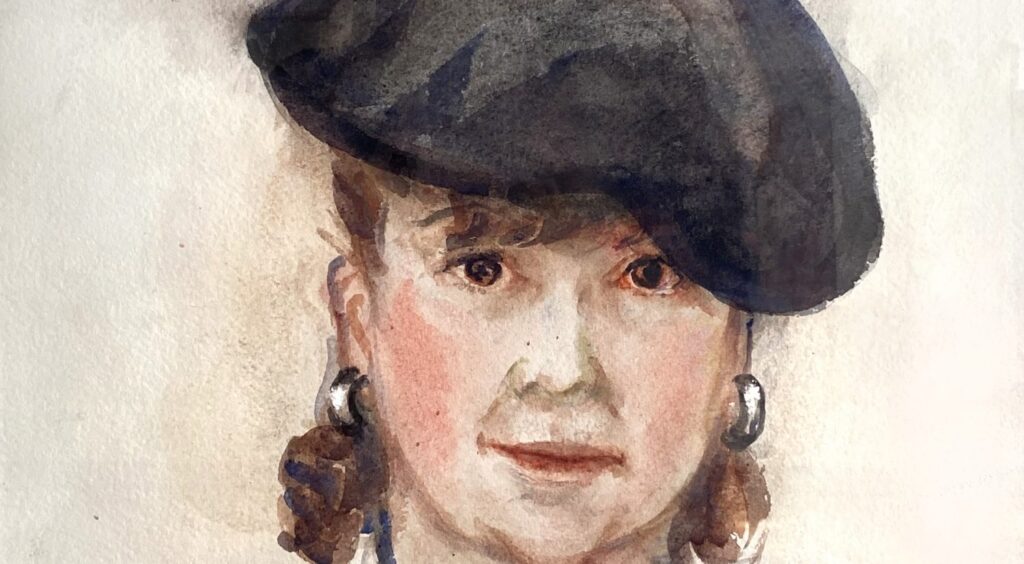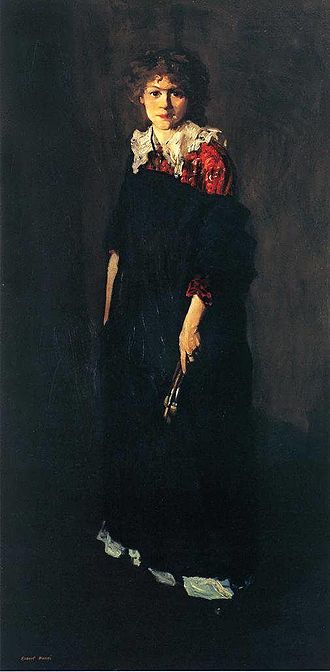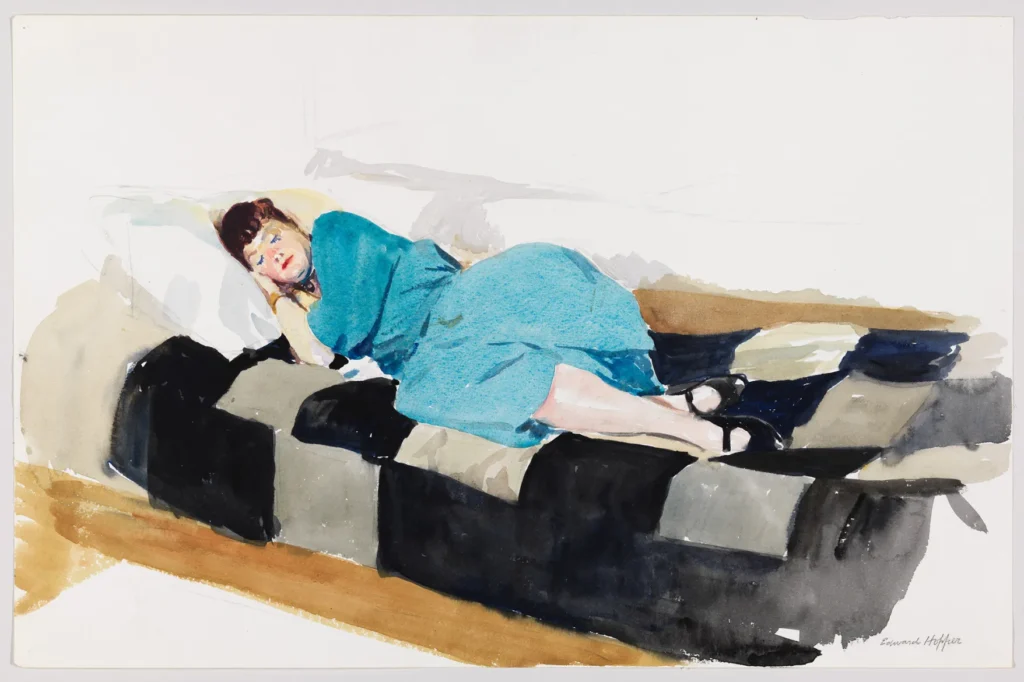Laura Knight in 5 Paintings: Capturing the Quotidian
An official war artist and the first woman to be made a dame of the British Empire, Laura Knight reached the top of her profession with her...
Natalia Iacobelli 2 January 2025
Josephine Verstille Hopper (née Nivison, 1883-1968) was not just the wife and muse of one of the most renowned American artists of the 20th century, Edward Hopper (1882-1967); she was a fully accomplished painter in her own right. Having studied under the guidance of Robert Henri and Kenneth Hayes Miller at the New York School of Art, Jo Hopper’s artistic prowess was acknowledged when she secured the Huntington Hartford fellowship in 1957.
Better known at the beginning of their relationship, Josephine soon receded into her husband’s shadow, oiling the wheels of his success. She underpinned Edward’s eminence, although her works lacked appreciation. More than just a muse, let’s find out the story of the painter version of Josephine Hopper.

Josephine Nivison Hopper, Self-Portrait, Edward Hopper House Museum & Study Center, The Sanborn Josephine Nivison Hopper Collection, Nyack, NY, USA. Detail.
Josephine Nivison was born in Manhattan in 1883. She had a very nomadic, chaotic childhood. Her family was struggling with money, her father being a piano teacher and her mother, a free spirit housewife, who allowed Jo and her younger brother to do anything they wanted. Thus, Nivison went to college, a daring deed for a woman of her time. She got a teaching degree from Hunter College and later enrolled in small avant-garde groups before entering the New York School of Art.

Robert Henri, The Art Student (Portrait of Miss Josephine Nivison), 1906, Milwaukee Art Museum, Milwaukee, WI, USA.
At the New York School of Art, Josephine Nivison was the favorite of Robert Henri, a well-known, respected realist painter and teacher. As a sign of appreciation, Henri completed a skillful portrait of her, in which we can see the firmness and strength in her eyes. She wears an artist’s smock over a scarlet dress, holding three paintbrushes in her right hand.
She became a full-time artist after visiting Paris and teaching in New York’s public schools by the 1920s. That’s when she met Edward Hopper, a former New York School of Art classmate when they were living in an art colony in Gloucester, MA. He was 41, still working on magazine covers, while she suggested he try working with watercolors.
An accomplished painter by the time she met Edward Hopper, Nivison had her paintings hanging next to Picasso, Man Ray, and Modigliani at well-known New York City galleries featuring her. On the other hand, Edward hadn’t sold a painting in over a decade. He was feeling depressed, still working for magazines as an illustrator. Jo wanted to help him, asking the Brooklyn Museum curators to exhibit some of his works, changing the course of art history and launching Hopper’s career as a new American realist painter.

Edward Hopper, Jo Sleeping, c. 1924-1927, Whitney Museum of American Art, New York City, NY, USA.
The couple got married in 1924, embarking on a thunderous adventure. Near her death in 1968, she left all of her work and Edward’s one inheritance to the Whitney Museum of American Art. The museum mostly kept Edward’s artworks, throwing away or “loaning” her works to hospitals and office buildings. Let’s say it didn’t help posing for her husband’s art, keeping track of the sales, or handling the press for Edward during their marriage.
Hopper underestimated Jo’s work, too, calling her “a little pleasant talent” and telling her nobody appreciated her work anyway. When he was a juror for group exhibitions, he would aggressively dismiss her applications, fearing nepotism or, why not, competition.
Jo Hopper was an excellent watercolor artist. Her palette was always filled with light colors, red, lime, green, or lemon yellow, that captured and expressed her “cheery” worldview. All her letters were signed the same, no matter her frustration, happiness, or disquiet, as “Cheerly, Jo.”
Her work was a prominent example of American modernism. Jo Hopper’s impressionistic landscapes fascinated the art critics, even if it was her husband’s work that caused a sensation. The Brooklyn Museum started to buy Edward Hopper’s works, beginning with Mansard Roof in 1923. Soon, Josephine Hopper found herself in the role of her husband’s manager, talking for him in interviews and keeping track of his sales. During their marriage, she never stopped painting but never got paired with Man Ray or Picasso again.
https://news.artnet.com/art-world/jo-nivison-hopper-2086277 (accessed 25 Jan. 2024).
https://nypost.com/2020/04/11/woman-who-made-edward-hopper-famous-finally-seizes-the-spotlight/ (accessed 27 Jan. 2024).
https://www.fembio.org/english/biography.php/woman/biography/josephine-nivison-hopper/ (accessed 28 Jan. 2024).
DailyArt Magazine needs your support. Every contribution, however big or small, is very valuable for our future. Thanks to it, we will be able to sustain and grow the Magazine. Thank you for your help!